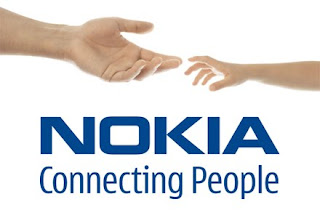China Unicom and US high-tech giant Apple have announced they had reached a multi-year deal to launch the widely popular iPhone in the world's largest mobile market later this year.
The announcement marks the iPhone's long-awaited debut on the mainland, which has about 687 million mobile phone users and is one of the last major markets where the trendy smartphone is not yet officially sold.
Unicom, one of three major state-owned carriers, would be the first Chinese phone company to formally support the iPhone, though thousands of unlocked iPhones brought in from other markets are in use in China. It is the only company in China that supports the network standard needed for the iPhone, known as WCDMA.
The initial launch is expected to be in the fourth calendar quarter of 2009. This will provide users with a brand new communication and information experience.
The iPhone, which also functions as a music player, camera and Internet browser, could help Unicom compete against giant China Mobile, which dominates the mainland's mobile market.
The company, the smaller rival of China's largest wireless operator China Mobile, started iPhone negotiations with Apple after the government issued third-generation, or 3G, mobile phone licences in January.
Chang and China Unicom president Lu Yimin said their company aimed to take more than one-third of China's 3G mobile market next year.
The iPhone is likely to be priced from 2,999 yuan (439 dollars) with a requirement that users also buy 3,000 yuan worth of pre-paid calls, the Caijing business magazine reported Thursday, citing sources close to the talks.
China Unicom, which had 140 million mobile subscribers by end-June, expects to attract high-end users with the iPhone to turn around weak performance in competition with arch rivals China Mobile and China Telecom, reports have said.
The confirmation of the deal with China Unicom means Apple has dropped China Mobile, which has been in similar talks with the US company for years. China Mobile, which had 493 million subscribers by the end of June, is developing a handset similar to the iPhone with firms including Chinese computer maker Lenovo.
The announcement marks the iPhone's long-awaited debut on the mainland, which has about 687 million mobile phone users and is one of the last major markets where the trendy smartphone is not yet officially sold.
Unicom, one of three major state-owned carriers, would be the first Chinese phone company to formally support the iPhone, though thousands of unlocked iPhones brought in from other markets are in use in China. It is the only company in China that supports the network standard needed for the iPhone, known as WCDMA.
The initial launch is expected to be in the fourth calendar quarter of 2009. This will provide users with a brand new communication and information experience.
The iPhone, which also functions as a music player, camera and Internet browser, could help Unicom compete against giant China Mobile, which dominates the mainland's mobile market.
The company, the smaller rival of China's largest wireless operator China Mobile, started iPhone negotiations with Apple after the government issued third-generation, or 3G, mobile phone licences in January.
Chang and China Unicom president Lu Yimin said their company aimed to take more than one-third of China's 3G mobile market next year.
The iPhone is likely to be priced from 2,999 yuan (439 dollars) with a requirement that users also buy 3,000 yuan worth of pre-paid calls, the Caijing business magazine reported Thursday, citing sources close to the talks.
China Unicom, which had 140 million mobile subscribers by end-June, expects to attract high-end users with the iPhone to turn around weak performance in competition with arch rivals China Mobile and China Telecom, reports have said.
The confirmation of the deal with China Unicom means Apple has dropped China Mobile, which has been in similar talks with the US company for years. China Mobile, which had 493 million subscribers by the end of June, is developing a handset similar to the iPhone with firms including Chinese computer maker Lenovo.




